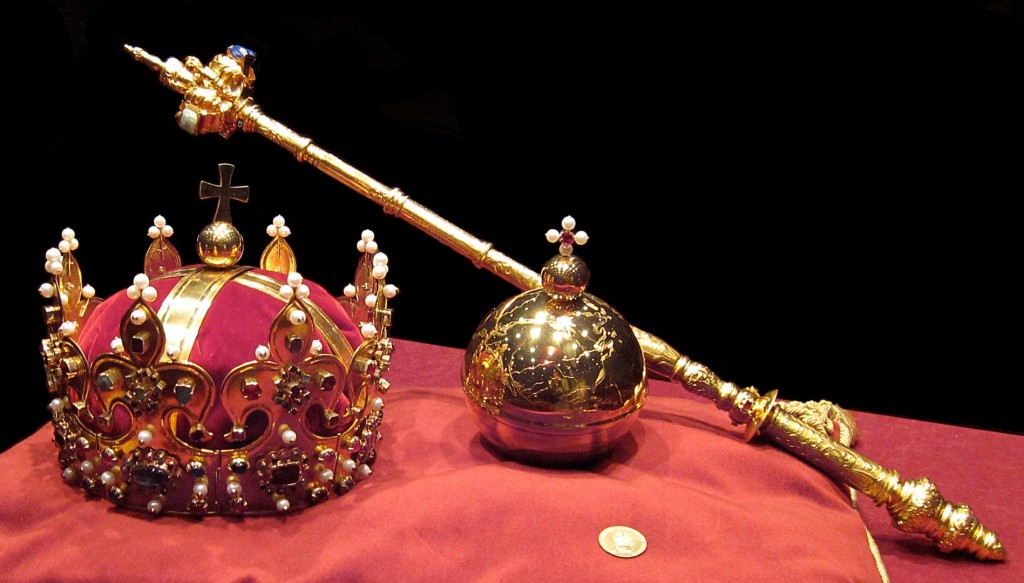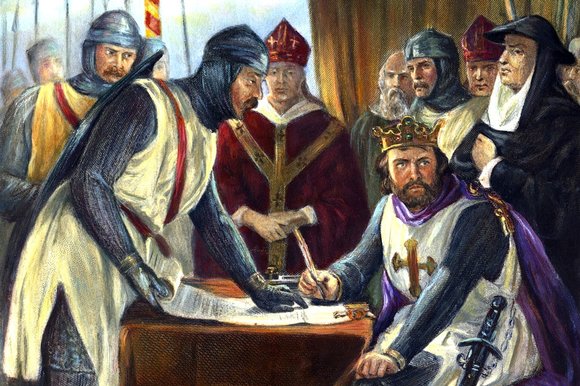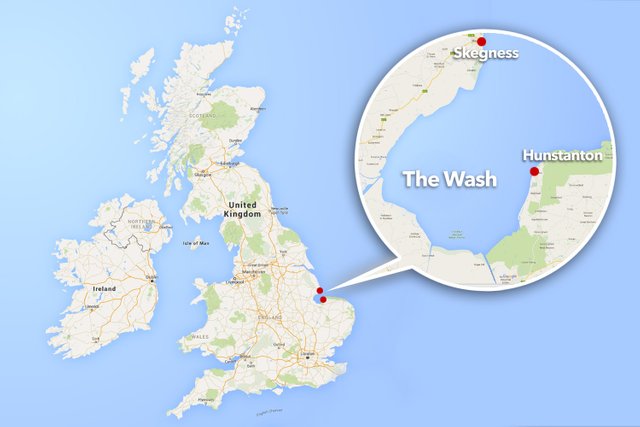The King who lost the crown jewels of England
In 1216, ‘Bad King John’ – a monarch so incompetent and evil that his name is still preserved in folklore, films and nursery rhymes – was running from his enemies. When his army tried to cross the mudscapes of the tidal estuary that Britons call the Wash, rising waters caught his baggage train. The wagons and their contents, including the king’s treasure, were lost.
The estimated value of the treasure is $70,000,000. The treasure contains crown jewels, silver plates, gold goblets, the sword of Tristram, golden wand with a dove and many gold coins.
The story of how King John lost his treasure starts in 1216. John inherited the crown of England thanks mostly to the crusades by his brother Richard the Lionheart. But in the autumn of 1216, his powers have sunk and he lost much of his land in France to Philip Augustus. He was forced by his Barons to sign the Magna Carta, a document that reduced the power of the king and the Crown.
In October the same year, John arrived in Lynn, one of the cities that was still friendly towards him. He had journeyed from Lincolnshire to Bishop’s Lynn (now King’s Lynn) in Norfolk, but when he arrived he began to feel ill. It was decided that he would return back towards Lincolnshire, which was probably thought to be safer at this time, as the French king, Louis, had recently invaded the country to the south.
On 12 October, John attempted to cross the Wash, the large bay that separates East Anglia from Lincolnshire. At this time it extended much further inland than it does today, and would have been a region of mudflats and marshes, approachable at low tide but dangerous to the unwary, riddled with quicksand and deeper channels and vulnerable to rapid movements of water with the tide.
According to the story, John crossed the bay at Wisbech. However, while the King managed to cross the bay, his baggage train that was carrying the royal treasure, got lost in the tides and the rising waters. John organized a search for his baggage train, but it was never found.
The ill fortune caused John even more stress, and the King was getting sicker and sicker with each passing day. Historians believe he was taken to the monastery in Lincolnshire, a place he spent his last days and died on October 18.
In the intervening 800 years, the landscape in that area of the country has changed dramatically. “Where there were sand flats covered by the tides there are now dry sand dunes.
If King John’s treasure lies intact beneath these barren hills of wind-blown sand it is merely a question of steam shovels and dredges and the removal of countless tons of sand…But, on the other hand, the scouring tides, the winter’s storms, the seas and the shifting sands may have scattered the treasure far and wide.”

Source
The only way we can know for sure is to get your metal detectors and start digging.
SOURCES
*http://www.documentarytube.com/articles/king-john-s-lost-treasure--will-it-ever-be-found
*https://en.wikipedia.org/wiki/The_Wash
*https://en.wikipedia.org/wiki/John,_King_of_England
*http://www.bbc.com/travel/story/20170926-the-lost-jewels-of-bad-king-john
*https://www.unexplained-mysteries.com/forum/topic/224886-the-lost-treasure-of-king-john/




Congratulations! This post has been upvoted from the communal account, @minnowsupport, by seltkirk from the Minnow Support Project. It's a witness project run by aggroed, ausbitbank, teamsteem, theprophet0, someguy123, neoxian, followbtcnews, and netuoso. The goal is to help Steemit grow by supporting Minnows. Please find us at the Peace, Abundance, and Liberty Network (PALnet) Discord Channel. It's a completely public and open space to all members of the Steemit community who voluntarily choose to be there.
If you would like to delegate to the Minnow Support Project you can do so by clicking on the following links: 50SP, 100SP, 250SP, 500SP, 1000SP, 5000SP.
Be sure to leave at least 50SP undelegated on your account.